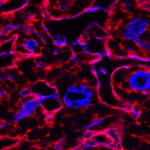Link to Pubmed [PMID] – 25726757
Eur. J. Immunol. 2015 May;45(5):1524-34
Analyses of the regulatory T (Treg) cell TCR repertoire should help elucidate the nature and diversity of their cognate antigens and thus how Treg cells protect us from autoimmune diseases. We earlier identified CD44(hi) CD62L(low) activated/memory (am) Treg cells as a Treg-cell subset with a high turnover and possible self-specificity. We now report that amTreg cells are predominantly distributed in lymph nodes (LNs) draining deep tissues. Multivariate analyses of CDR3 spectratyping first revealed that amTreg TCR repertoire is different from that of naïve Treg cells (nTreg cells) and effector T (Teff) cells. Furthermore, in deep- versus superficial LNs, TCR-β deep sequencing further revealed diversified nTreg-cell and amTreg-cell repertoires, although twofold less diverse than that of Teff cells, and with repertoire richness significantly lower in deep-LN versus superficial-LN Treg cells. Importantly, expanded clonotypes were mostly detected in deep-LN amTreg cells, some accounting for 20% of the repertoire. Strikingly, these clonotypes were absent from nTreg cells, but found at low frequency in Teff cells. Our results, obtained in nonmanipulated mice, indicate different antigenic targets for naïve and amTreg cells and that amTreg cells are self-specific. The data we present are consistent with an instructive component in Treg-cell differentiation.

